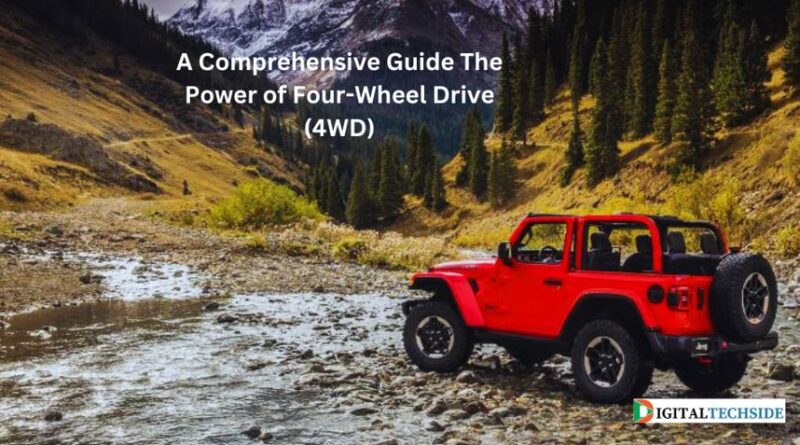A Comprehensive Guide The Power of Four-Wheel Drive (4WD)
Introduction
In the world of automotive engineering, few innovations have revolutionized the way we traverse diverse terrains as much as Four-Wheel Drive (4WD) systems. Whether you’re an off-road enthusiast, a winter warrior, or someone simply looking for enhanced traction and stability, 4WD technology has become a hallmark of versatility and performance in the automotive industry.
With ongoing research and development, we can anticipate further refinements in 4WD systems, making them more efficient, responsive, and integrated with emerging automotive technologies. As the automotive industry continues to push the boundaries of innovation, the legacy of 4WD stands as a testament to its enduring significance in shaping the future of driving.
Read further by a manufacturer of Roll Bar for Isuzu Dmax –
Understanding Four-Wheel Drive (4WD)
Fundamentally abbreviated as 4WD, Four-Wheel Drive is a drivetrain system that concurrently propels all four wheels of a vehicle. Diverging from two-wheel drive (2WD) setups, which channel power exclusively to either the front or rear wheels, 4WD facilitates the distribution of power across all four wheels. This configuration enhances traction and control, proving particularly beneficial in diverse driving conditions. This feature is particularly advantageous in off-road scenarios, slippery surfaces, and challenging terrains.
Types of 4WD Systems
1. Part-Time 4WD
Part-time 4WD systems are designed for selective engagement and are commonly found in trucks & SUVs. Drivers can manually switch between 2WD and 4WD modes, enabling them to optimize fuel efficiency during regular driving conditions and activate 4WD when additional traction is needed. This system is ideal for off-road adventures or inclement weather.
2. Full-Time 4WD
Full-time 4WD, also known as permanent 4WD or all-wheel drive (AWD), delivers power to all 4 wheels continuously. This system is more common in vehicles built for both on-road and off-road use, providing enhanced stability in various driving conditions. Some full-time 4WD systems also incorporate a differential that allows for variations in wheel speed during turns.
3. Automatic 4WD
Automatic 4WD systems are designed to automatically engage when the vehicle detects a loss of traction. These systems monitor wheel slippage and distribute power accordingly. While convenient, automatic 4WD systems may not provide the same level of control as manually engaged 4WD systems in certain off-road situations.
Benefits of 4WD
As technology continues to advance, the integration of intelligent 4WD systems becomes more prevalent offering drivers’ even greater control and efficiency. Modern 4WD systems often come equipped with electronic controls and sensors that can automatically adjust power distribution based on real-time driving conditions. This level of sophistication enhances both on-road and off-road performance, allowing for seamless transitions between 2WD and 4WD modes as needed.
1. Enhanced Traction
The primary advantage of 4WD is the improved traction it offers or you can also add wheel spacers for Thar. By powering all four wheels, the system reduces the likelihood of wheel slippage, making it easier to navigate through challenging terrains such as mud, snow, sand, or rocky surfaces.
2. Capability Off-Road
4WD is a game-changer for off-road enthusiasts. Whether conquering steep inclines, navigating through deep mud, or traversing uneven surfaces, 4WD provides the necessary torque to overcome obstacles and reach destinations that may be inaccessible to 2WD vehicles.
3. Increased Stability
On paved roads, 4WD contributes to enhanced stability and control, especially in adverse weather conditions. The additional grip on all 4 wheels helps prevent skidding, sliding, and loss of control, promoting safer driving in rain, snow, or icy conditions.
4. Towing Capacity
Many 4WD vehicles, particularly SUVs and trucks boast increased towing capacities. The added traction and torque make them well-suited for hauling trailers, boats, or other heavy loads, making 4WD an attractive choice for those with towing needs.
Furthermore, hybrid and electric vehicles are incorporating electrically driven four-wheel-drive systems providing instant torque to each wheel independently. This not only improves energy efficiency but also demonstrates the adaptability of 4WD technology across various propulsion systems.
Summary
It (4WD) technology has evolved from a niche feature for off-road enthusiasts to a mainstream option for a wide range of vehicles. Whether you’re navigating challenging terrains, seeking enhanced stability in adverse weather, or requiring increased towing capacity, 4WD systems offer a versatile solution. As automotive engineering continues to advance, we can expect further innovations in 4WD technology, pushing the boundaries of what’s possible on and off the road.

As a DIGITALTECHSIDE author, the majority of our articles have been focused on technology, blogging, business, lifestyle, social media, web design and development, e-commerce, money, health, education, entertainment, SEO, travel, and sports.
Contact us at digitaltechside@gmail.com if you have questions of anything.




